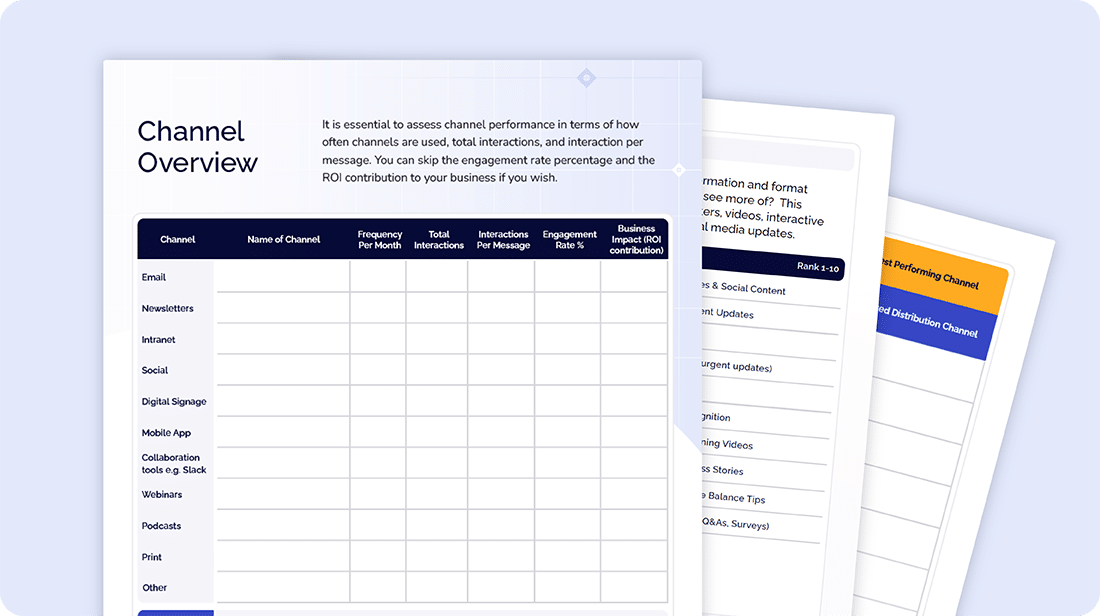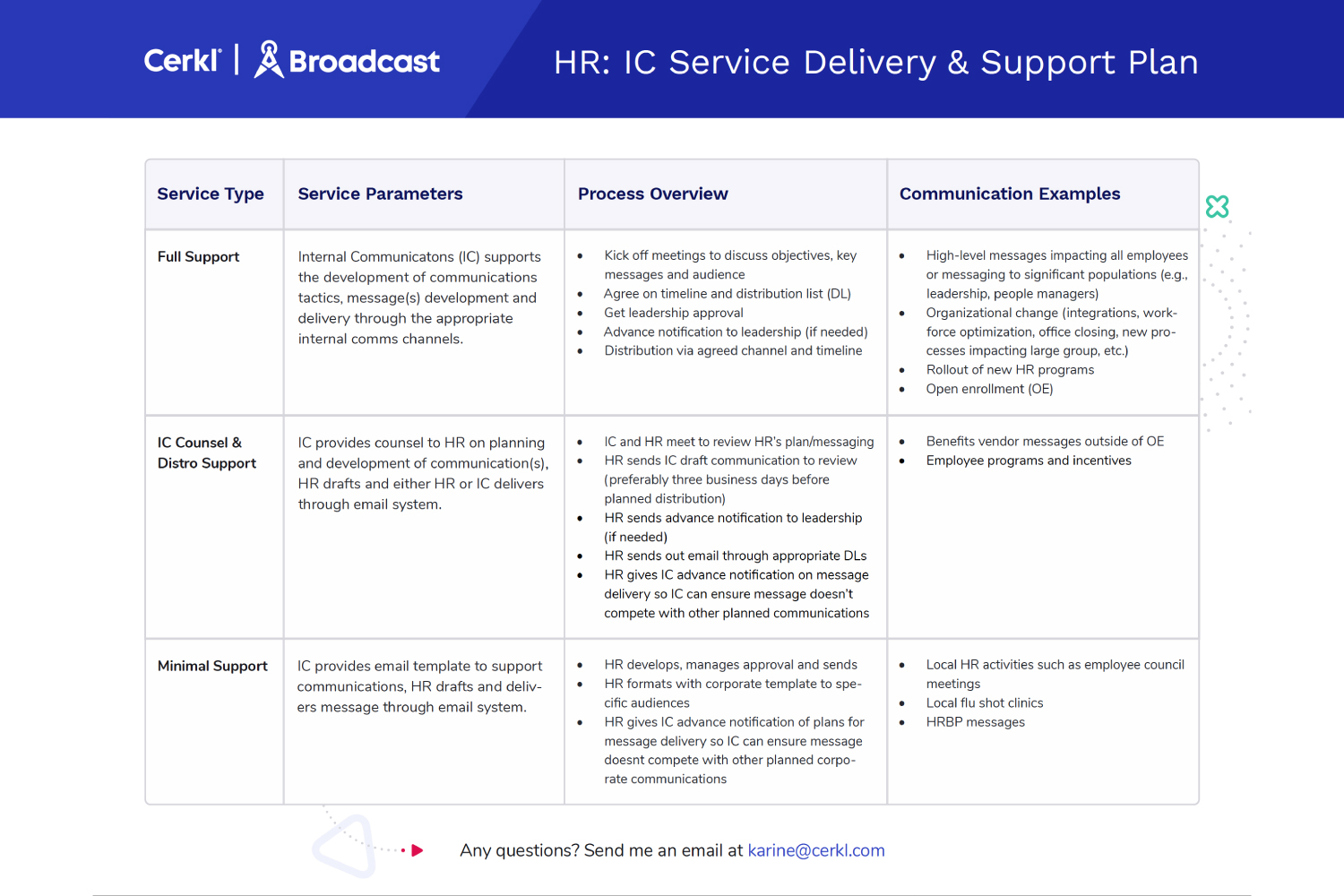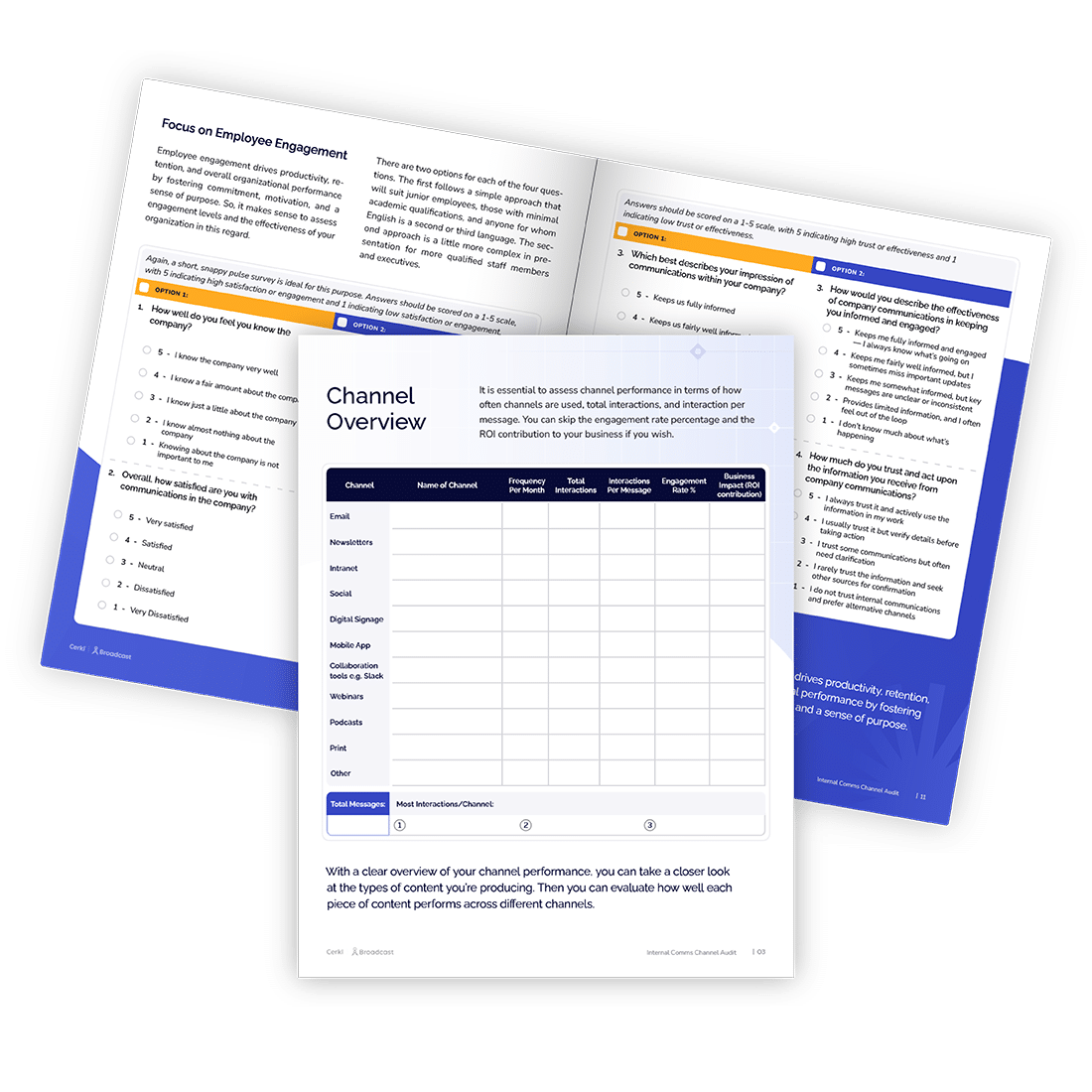Need help navigating your company's technology adoption process? Check out our IT Procurement Guide designed for internal communicators.

.png)
Strategy is an important component of internal communications. Ensure you’re communicating through the right channels at the right frequency with our Internal Communications Channel Audit worksheet.
Access NowLet’s face it; I bet you’ve never met an employee communications colleague with a lot of time on their hands. Internal communicators (IC) are typically underwater juggling simultaneous comms projects and deadlines. Hence, the additional time required to navigate a company’s evaluation and procurement process present any IC team challenges.
According to a 2018 market study conducted by CSO Insights, a division of Miller Heiman Group, on average B2B sales to new customers took at least four months to close, with almost half (46.4%) taking seven months or more.
No matter how your company manages technology evaluation and adoption, it’s typically a long, complex process. It will likely involve influence, due diligence, project management and socialization.
To help the non-technical get the answers to the test, we’ll take you through the typical procurement stages with tips and best practices for each step along the way.
Most companies have documented processes for technology or software as a service (SaaS) adoption. As an internal communications partner, it helps to have a general knowledge of this process. Companies have different requirements to demonstrate need and request budget resources. Before the renewal of an existing SaaS contract, the overall technology assessment is also essential to know if you are looking to replace technology.
Due diligence and vendor selection processes run much smoother when the IC team understands the required initial work and approvals needed. Like healthcare or government contractors, some industries work through formal requests for proposals with invitations sent to several bidders. Other companies permit business units to conduct their solution evaluation legwork independently or with IT and procurement support.
Upgrade your company’s internal comms to enhance employee communication

Hands down, you’ll be more successful with software adoption when you have an engaged cross-departmental team behind you.
When and how to engage a project sponsor depends on your company’s culture and process. If the project is enterprise-wide, you should start with socialization within your communications leadership, operations, and IT.
Cost and budget will dictate how early you will need to engage a project champion. Ideally, this person has the autonomy and/or responsibility to greenlight the IT procurement process. Typically, it is your function’s leader (this can be the leader you report through, whether it’s Sales and Marketing, Communications as its function or HR). An executive sponsor can also help with providing recommendations for your stakeholder group.
Your next challenge will be to strategically engage stakeholders and generate buy-in. An executive sponsor (or lead stakeholder) can be this key influencer that helps with the initial project’s momentum. Stakeholders must understand the business needs you’re solving with a new communications technology and how the benefits will impact their teams with tangible benefits. Adopting new solutions becomes more urgent when a platform can tie it to a strategic business initiative. To make the best use of stakeholders’ time, you should have a management plan. This plan outlines how you’d like stakeholders to be involved in the decision-making, testing, and adoption process for a new communications technology.
Additionally, a supporting RACI chart outlines who is Responsible, Accountable, Consulted (those who should provide feedback) and Informed (who needs to know about this project). A RACI chart is a reliable tool that should help identify cross-department stakeholder roles and engagement levels for the project. We created a high-level RACI reference guide to help with your planning.

Okay, you’re not a technical know-it-all. That’s all right. As the company’s communications team member, you should be central to the software procurement process.
Internal communicators are silo surfers. You work with nearly every corner of the company. So, don’t wait for an IT project to build strong connections with your company’s IT or Business Technology (BT) department. Start cultivating a partnership with this central support function and engage with them on creating a three or five-year technology roadmap centered on your strategic business priorities. Developing this structured partnership will ease new technology discussions. Also, ongoing collaboration helps develop a genuine cross-functional effort, so both parties get input during the procurement process.
In tandem with understanding the IT procurement process, you should know how your IT function is structured and your primary business partners, even if internal communications are not your communications platforms’ business owner. It’s even better if you can speak IT’s language.
IT can help uncover these key questions:
Upgrade your company’s internal comms to enhance employee communication

A typical internal communications team wants to spend more time creating compelling brand-defining stories that unpack the company’s strategic priorities. Also, an IC team wants to engage more employees wherever they sit within the biz. Moreover, they want to showcase the company’s mission, vision, and values in action with human interest stories that motivate employees in their respective roles.
They also want to somehow limit or even eliminate the time suck involved in tactical work like DL creation and repurposing content for internal channels. Let's not forget—they want to show impact!
Developing a comms IT stack that takes into account cross-channel communication and analytics gets complicated. Usually, imperative collaboration channels like Slack or Microsoft Teams aren’t owned by the IC team but should be influenced by IC strategy. You may have a wishlist in mind based on a past employer that adopted IT best practices. Alternatively, you may not have experience using a communications tool and need to start with a solid email distribution and analytics solution. These tools must align with your company’s culture.
Company cultures have drastically changed over this past year as most companies have moved remotely. These new work arrangements add another layer of complexity to how they keep employees informed and engaged. A remote workforce, especially during the pandemic, has underscored the need to invest in a modern communications experience. Likewise, companies can save time and ensure employee productivity by reducing email and publishing company news in employees’ preferred channels (intranet, collaboration, or mobile).
You and key stakeholders need to know what you have, the contract term, and whether you would like to build on, enhance, or replace your existing tools. Some companies are technology agnostic, choosing the best solution for the business need. In contrast, others are focused on solutions that work with a particular communications suite, like Microsoft 365 or G-Suite. For example, here are the communications channels you should review:
The IT team usually goes through this exercise periodically or close to SaaS contract renewal. That is to say, if the IC team is the business owner of communications platforms, it’s imperative that communicators have a seat at the table or arguably help drive assessments. Why? Because the selected solution will be critical to your communications strategy, and your team will be primarily working within the solution and setting governance for other users.
Before you begin to assess the tools you need, your team should review the following:
Next, it's time to research vendors and their product offerings now that you have an idea of the solution you’re looking for and have IT and stakeholders’ buy-in.
It’s helpful to connect with professional organizations like Internal Comms Pro to obtain more information on what tools IC professionals from companies large and small utilize. Also, check out software buying guides like G2 or Capterra. There’s a lot to consider when qualifying and comparing software vendors. For starters, you should evaluate
A business case is oftentimes required to identify the company’s needs. Ideally, a solid business case maps those needs to strategic business initiatives or goals across the organization and provide reliable projections on what returns on investment a new communication technology would yield.
A practical, compelling business case can help support one solution, vendor, or the functionality required. This document may also list possible software vendors to investigate further. The recommendations outlined in the business case need to match your overall procurement process. For instance, companies may require a business case after completing an initial technology review with a handful of vendors. Likewise, other processes encourage submitting a business case to provide background and scope of work for a top vendor pick.
Procurement and vendor management may dictate how negotiations unfold with software vendors. Just as you need to bring in IT early, it’s wise to get to know your Procurement and Vendor Management team. Generally, a member of this team should be one of your stakeholders. It helps to understand how this team measures success and what leg work you can present to them to select the best solution for your team and the broader company. Here are some helpful questions to scope out Procurement’s participation and influence:
Procurement and Vendor Management is charged with optimizing vendor relationships and controlling costs. By controlling the sales process, Procurement’s objective is to ensure vendor contracts minimize risk and benefit the company. They also want clear apples-to-apples comparisons if they are managing an RFP process. When IC and the IT team supply this information and get Procurement at the table, there are fewer surprises and less negotiating.
Now that we’ve laid out the elements, it’s time to reach out across the company and begin planning the preliminary steps to move down the IT procurement adoption path. Think of this as a stretch project that will help you acquire new skills as a communicator. Likewise, helping to manage and influence a software buying decision is a solid resume builder. This unique skill positions you as a key team player who is actively working to transform the employee experience.
Want to know how successful companies communicate and improve their team's experience? Get the template they use for free, no risk, no commitment.

Upgrade your company’s internal comms to enhance employee communication
Want feedback? If you complete it, we will provide you with free, personalized advice on how to improve. Get started using your email.

Upgrade your company’s internal comms to enhance employee communication